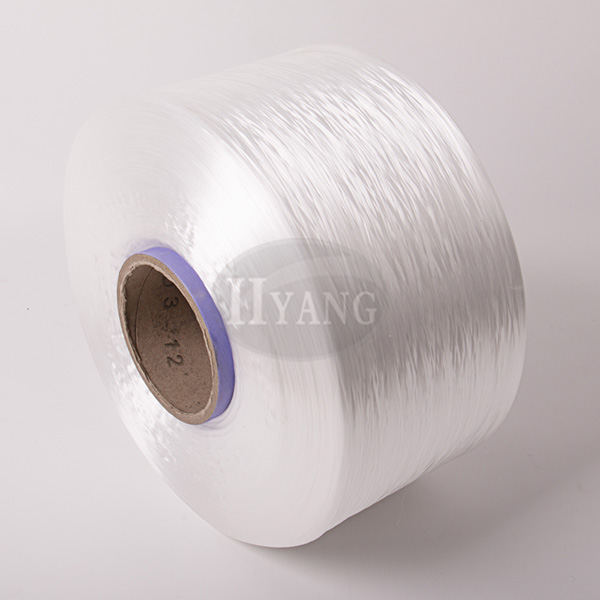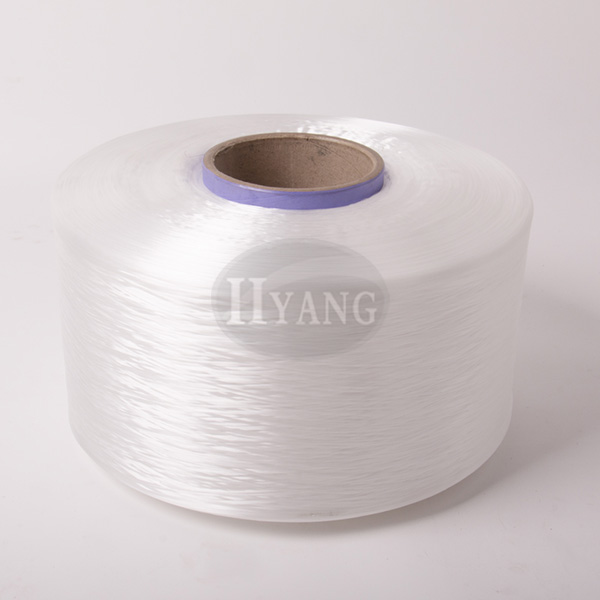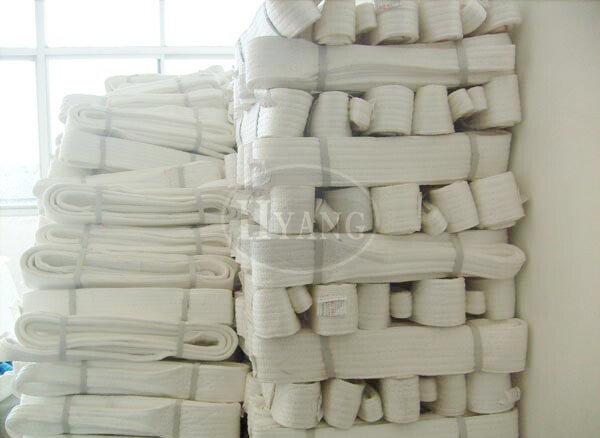
- Tel:0086-0523-87360106
- Cel:0086-18914408040 /13914429808
- E-mail:2370108759@qq.com
- Add:Heshi Town Industrial Zone, Taixing City, Jiangsu Province
Recently, Xiao Bian in the process of visiting, I feel that everyone is "squatting", "熬" to remove the inventory, "熬" waiting for the arrival of "Golden September and Silver 10", "熬" the customer's payment is in place... and these are In the third week of August, less than 20 days from the traditional textile season in September, the market seems to be weak and difficult to change.
This year's market is not busy, the off-season is a foregone conclusion. When high-temperature production limits can't save the increasing inventory, everyone turns their eyes to the price! Will the company “return blood” through price cuts? The answer is obviously yes!
The industry is deeply immersed in the "active destocking" cycle
From the perspective of economics, a complete inventory cycle consists of four phases, namely active restocking, passive restocking, active destocking and passive destocking, which correspond to the boom, recession, depression and recovery phases of the economic cycle.
According to data released by the National Bureau of Statistics, the growth rate of finished goods inventory of industrial enterprises continued to fall to 3.5% in June, while the inventory income ratio in June was 45.0%, which was still much higher than the same period of the past two years. Still waiting to be stocked.
The inventory growth rate returned to the downtrend channel, and the inventory-to-income ratio remained high, and the overall industrial enterprise was still in the active inventory cycle. According to the analysis of professionals, the textile and garment industry is also the status quo. In the next at least 1-2 months, the industry is still in the active inventory cycle, it is difficult to enter the passive destocking cycle, and the offset inventory cycle is longer.
Although the upstream raw materials have entered the “active destocking” to “passive destocking”, the weaving industry in the middle reaches is still in the “active inventory” cycle. The cycle of the terminal apparel industry is slower, and some garment factories reflect that they are either on hand. The shrinking volume is either that the pre-fabric fabric has not been digested, and the enthusiasm for the procurement of raw materials is not good, which also makes it difficult to destock the fabric market in the short term.
Enterprises automatically cut prices to go to stock
According to the sample data monitored by China Silk Network, the inventory of grey cloth in Shengze area has been maintained for 42-43 days. The near-term production did not allow the weaving manufacturers to significantly reduce the inventory. At the same time, they kept them in a state of balance between production and sales. As the market started to recover, the accumulated inventory did not take the opportunity to disappear, and the new fabric was woven out. The grey fabric began to get tired again. It is said that some large factories in Jiangsu and Zhejiang provinces are now tired of waiting for sales of thousands of grey cloth stocks. Some manufacturers have maintained their stocks in a relatively reasonable position by reducing prices.
At present, the market 190T polyester taffeta fell below the 1 yuan mark, 75D chiffon price is 3.00 yuan / m, the price returned to the level of around 2016, compared with the same period last year, down 30-40%, and The decline in raw material prices has not been so large, which has led to a significant compression of the profit margins of manufacturers.
Yang, the head of a simulation silk weaving factory in Shengze District, said: "The market price has been fairly stable recently, but in order to win the order, we will drop 1-2 hair, and hope that customers can place orders."
Li Zong, the head of the textile factory with Chunyao as the main product, also said that the previous orders, the profit of each loom will be guaranteed at 50-60 yuan / day, and now only a list of 20 yuan / day profit is also Will be connected, in order to ensure that the warehouse does not burst in the off-season.
The price of raw materials is extremely unstable. Recently, people have been asking about the price is very low. Can you bottom out? It has also been said that the gray cloth will rebound sharply in the peak season after reaching the low level. Is this still the case?
Just yesterday (August 14th), good news came from Sino-US trade relations.
On August 14, 2019, USTR issued the fourth batch of adjustments to the $300 billion tax collection list, which was divided into three parts: about 1% was excluded for medical and safety reasons (based on the US imports from China in 2018, The same goods); postponed the tax date of 59% of the products such as mobile phones, laptops, game consoles, some toys, computer monitors, some clothes, shoes and hats until December 15; the remaining 40% of the goods tax The date is still September 1.
Excluding 1% of merchandise, 59% of merchandise was postponed. The USTR excluded a total of $1.45 billion worth of goods, focusing on commodity classifications such as fish (HS03), vehicle parts (HS86), and inorganic chemicals (HS28). The main commodities deferred from taxation totaled $158.3 billion, accounting for 59%, mainly in electrical machinery, electrical equipment and parts (HS85, $62.5 billion, accounting for 74%), machinery, machinery and parts (HS84, 425 US$100 million, accounting for 74%), toys (HS95, US$21.9 billion, accounting for 82%), and footwear (HS64, US$6.7 billion, accounting for 48%).
Stimulated by the news, the raw materials market took the lead in responding, the volume and price rose, and the fabric market was relatively rational. The manufacturers said that Trump’s “changing face” technology was in full swing, and after a year of integration, we all compare Calm, can pick up the order, can not pick up can only give up, the key is to manage their own products, there will be a market for products. For the market outlook, most of the cloth bosses in the interview process said that the fundamentals are still under pressure in the short term.
01
The raw material rebound power is insufficient, and the cost of the grey cloth is difficult to bottom. Nowadays, many customers are more savvy. When raw materials rise, they will not actively raise prices for suppliers. However, when raw materials fall, they will talk to suppliers about prices. This has led to the difficulty of transferring the cost pressure of grey fabric manufacturers this year, and the profit margin is lower. As far as the current raw material market is concerned, although the raw material manufacturers have the absolute right to speak, the price will not fall, but the current downstream buyers lack the “speculation” mentality, and the raw material market lacks demand support.
02
Large-capacity projects are still in progress, and market supply is increasing in the short term. Since the beginning of this year, the pace of the transfer of low-end production capacity from Jiangsu and Zhejiang has not stopped. Many large companies have even invested in new capacity in units of 1,000 units. According to incomplete statistics, the production capacity of emerging water jet loom transferred from North Jiangsu, Anhui, Hubei, Jiangxi and other places exceeded 200,000 units, far exceeding the number of water jet looms eliminated by traditional textile clusters in the Yangtze River Delta region. It can be seen that the explosive production capacity of grey cloth is unstoppable.
03
The major clothing brands reported that the profit and inventory data were worrying. For example, in the 2019 semi-annual performance forecast released by La Chapelle, its pre-loss range in the first half of the year was between 440 million yuan and 540 million yuan, a year-on-year decline of 300%. At the same time, in the first half of the year, its crazy closed offline stores exceeded 2,400. From 2014 to 2018, La Chapelle's inventories rose rapidly, from 1.327 billion yuan to 2.534 billion yuan, while the inventory-to-liquid assets ratio rose from 26.42% to 48.58%.
When the industry enters the "cyclical off-season", all links will face a harsh survival of the fittest. After a slight rise in the market in the middle and late July, the market has returned to a calm, although the current sample and small orders for autumn and winter apparel fabrics have improved from the previous period, but small and medium-sized batches have become the mainstream of the market, and market orders are also uneven. Looking up seems to be "sudden to move", but there is still a distance from the "Golden Nine" in everyone's mind.
Taixing Hongyang New Material Technology Co., Ltd. has advanced equipment and exquisite technology. It mainly produces 500D~4000D polypropylene high-strength yarn, polypropylene air-changing silk, polyester air-changing silk and polypropylene ribbon. Hongyang products are sold well both at home and abroad. The majority of customers are highly praised.
- The 21st China (Dalang) Wool Products Fair
- High quality polypropylene high strength yarn life plays a role, you found?
- 2024 This textile and garment standards and quality conference should not be missed!
- The excellent characteristics of polypropylene air change yarn
- Textile people's Super week is coming!
- How is the tension of polypropylene high strength yarn?
- International oil price flash crash 6%! Some big factories have raised the price of raw materials?
- The more prominent use of polypropylene high-strength yarn is in the industrial field
- 2024 Keqiao Fashion Week (Autumn) kicks off
- Polypropylene high strength yarn has excellent characteristics
- Contact Us
- Unified Service Hotline: 0086-0523-87367699
- All rights reserved Taixing Hongyang New Material Technology Co., Ltd.
Technical Support::China polypropylene network




